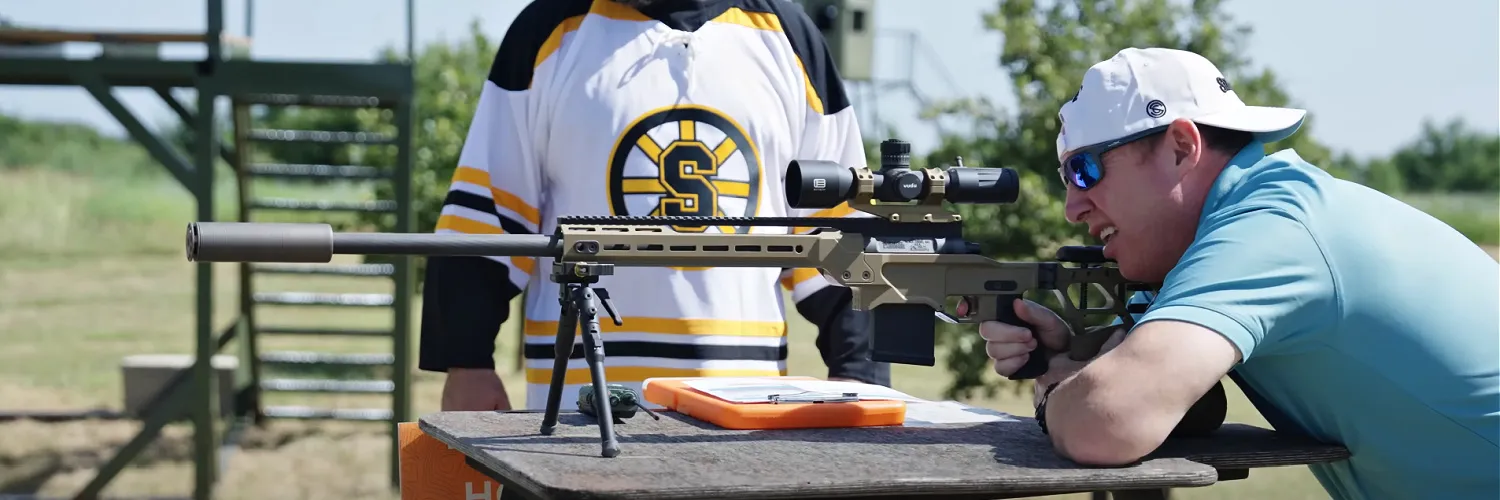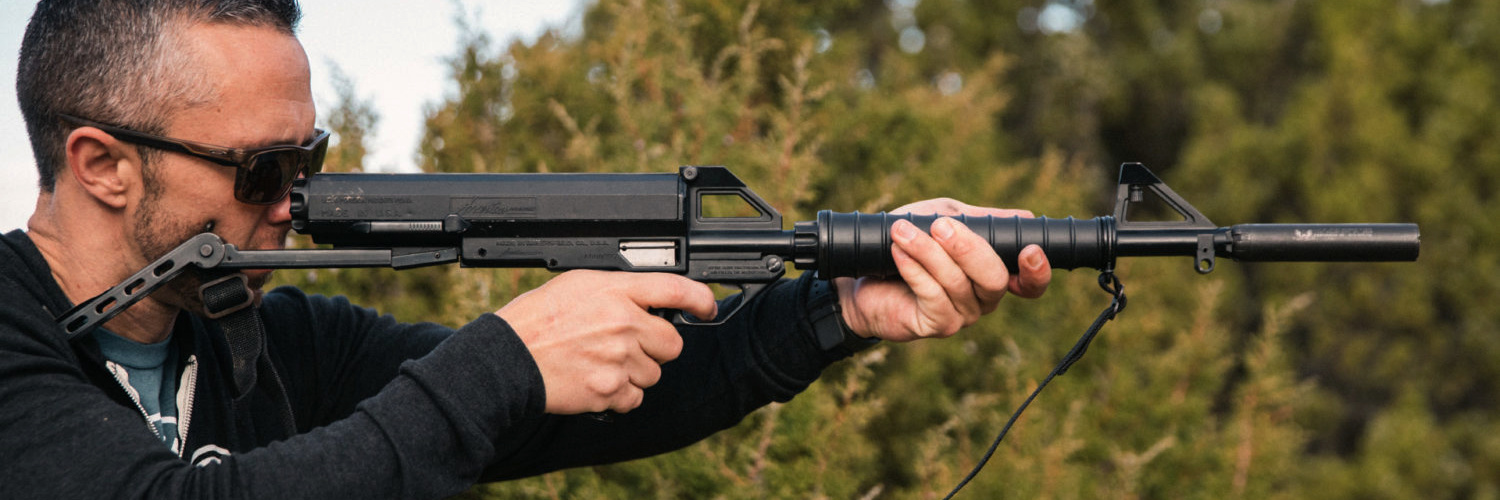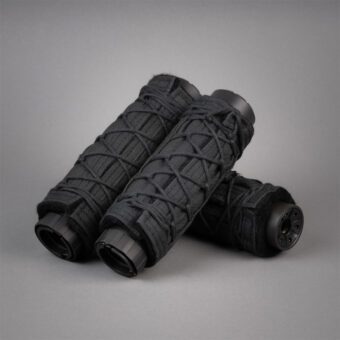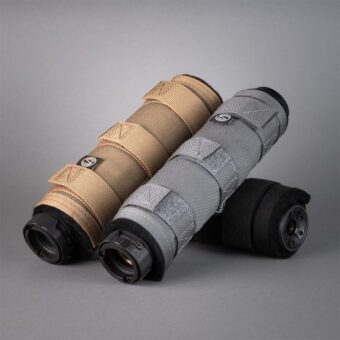Home / Firearms & Gun Parts / Suppressed AK: You Know You Want One
Suppressed AK: You Know You Want One
Suppressed AK: You Know You Want One
Home / Firearms & Gun Parts / Suppressed AK: You Know You Want One
Suppressing rifles has never been easier. Almost all manufacturers, even those making knock-offs of classic lever-action designs, are threading barrels. From bolt actions to rimfires to ARs—the ability to run suppressed is almost a given. Yet the AK-47 still stands out as a distinct challenge.
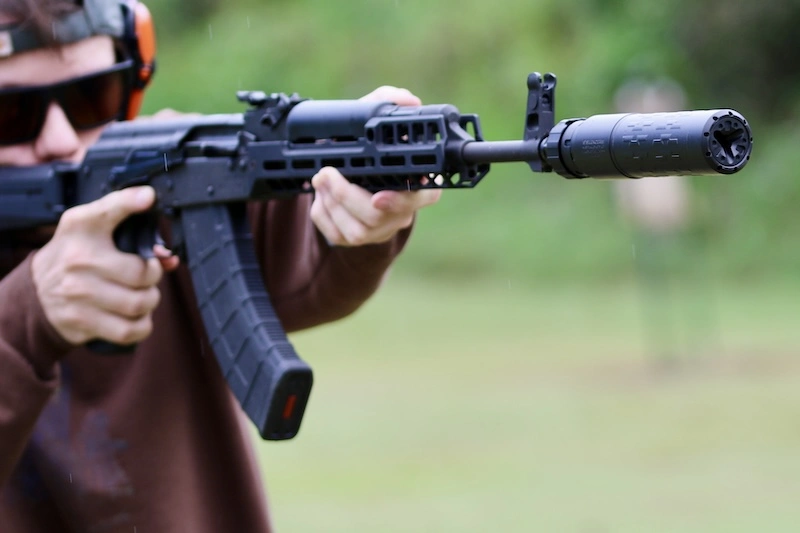
Why Suppress an AK?
Why breathe oxygen? I don’t know. Because you can? Because every gun should be suppressed. We have our reasons, and protecting our hearing seems legit.
But it can be far more complicated to suppress the AK platform. The reasons why, too, may seem complicated at first. It all stems back to the simple fact that Mikhail Kalashnikov’s masterpiece is not known for its tight tolerances.
AKs, in all of their iterative forms (and there are too many to count) work precisely because these relaxed standards allow for a decent amount of modularity. But the rifle has evolved over the last seven decades into many variants that now have no real commonality other than the bare bones of form and function.
This article will cover what you need to know to get started. We’ll pose the questions you need to ask and point to the specs you should check, but you’ll need to do some of the leg-work yourself to make final decisions about a suppressor.
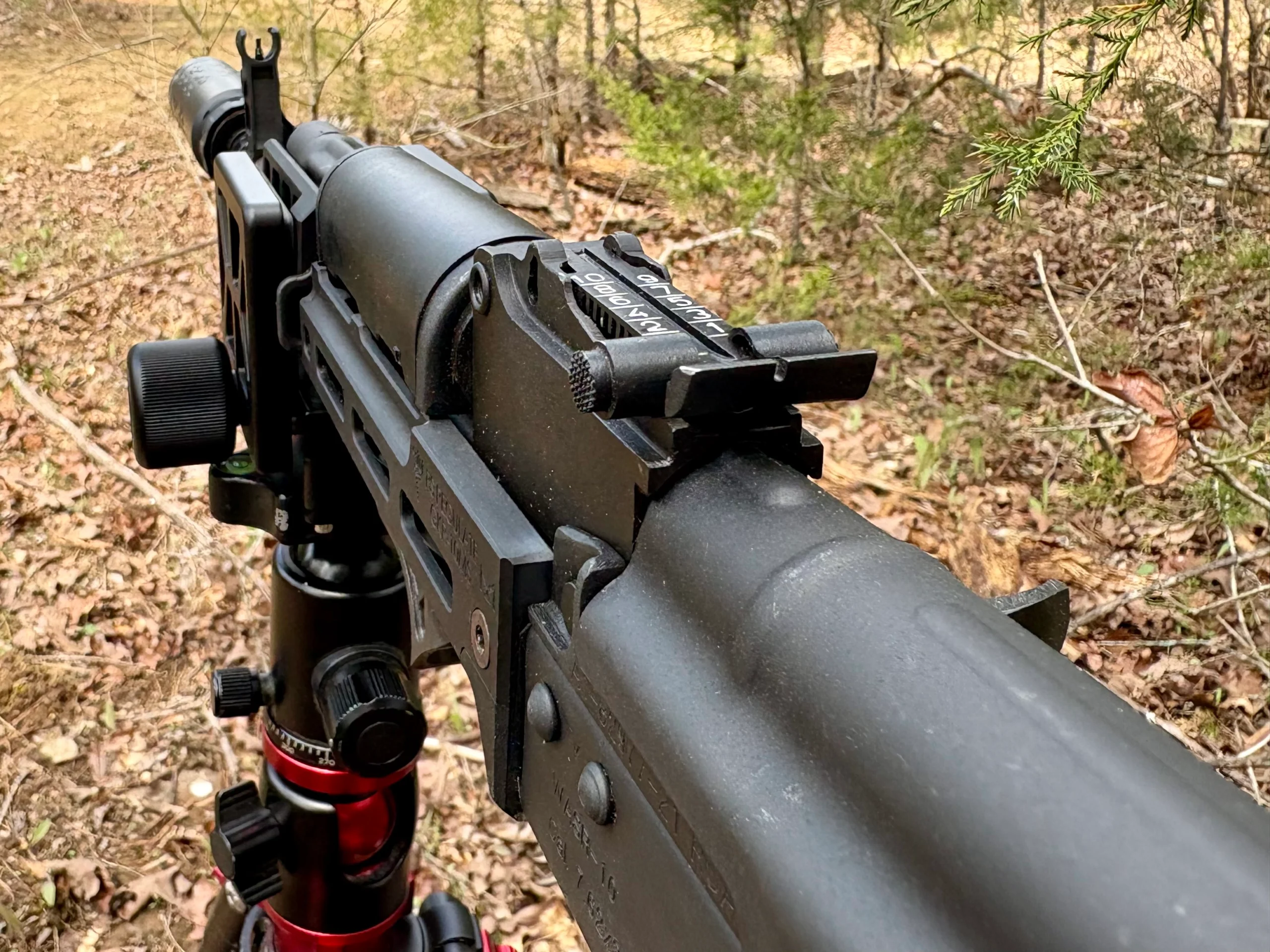
Finding the right 7.62 x 39
Most of the folks I know who own AKs do so out of either nostalgia or because the platform, in the not-so-distant past, was the single best way to shoot high-volume. The guns were inexpensive, and the ammo — ah, the good old days of 7.62 x 39 — was the cheapest centerfire round available.
Import restrictions, though — a topic for another day — have put a stop to that. And now many AKs are languishing in safes.
Ammo
The hardcore plinkers and history buffs have been joined by those who just appreciate the gun for all of its nuances. I’ve been hunting hogs with an AK now for a decade, and my go-to rifle has become an AK that I’ve built to run suppressed.
And now some domestic ammo manufacturers are picking up the slack on ammo production. While this hasn’t equated to rock-bottom spam-can prices, it does mean there are good options for high-performance hunting rounds and options for subsonics
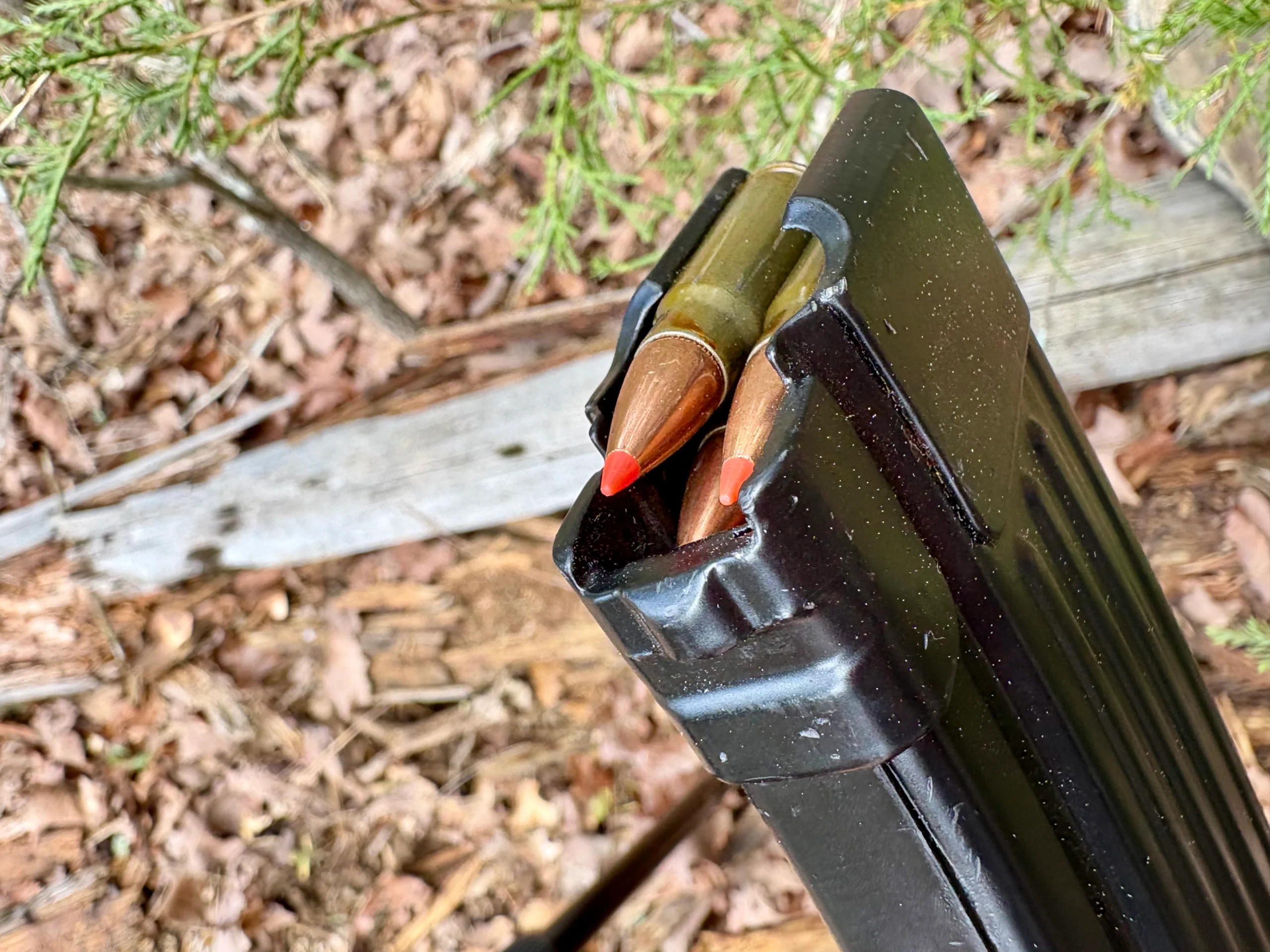
What Makes Noise?
First, let’s level-set some expectations. If shooting suppressed, to you, means a running subsonic .300 BLK through a suppressed bolt-action, any AK — no matter how well it is suppressed — is going to sound like a rattle trap. That bolt is noisy, even when you aren’t shooting anything at all.
Subsonic ammo in the 7.62×39 results in interesting terminal ballistics. The rounds are heavier, so they still perform well, but the slower muzzle velocity (which is what keeps it subsonic) means the rounds drop faster — and 7.62 x 39 (even the fast rounds) don’t shoot flat.
The other calibers may offer better trajectories. 5.56 and 5.45×39 both have lower ballistic coefficients, but they sacrifice mass.
Any round that breaks the sound barrier will crack. If you need speed, this is a byproduct you live with — but a suppressor will still walk back the noise to hearing safe levels.
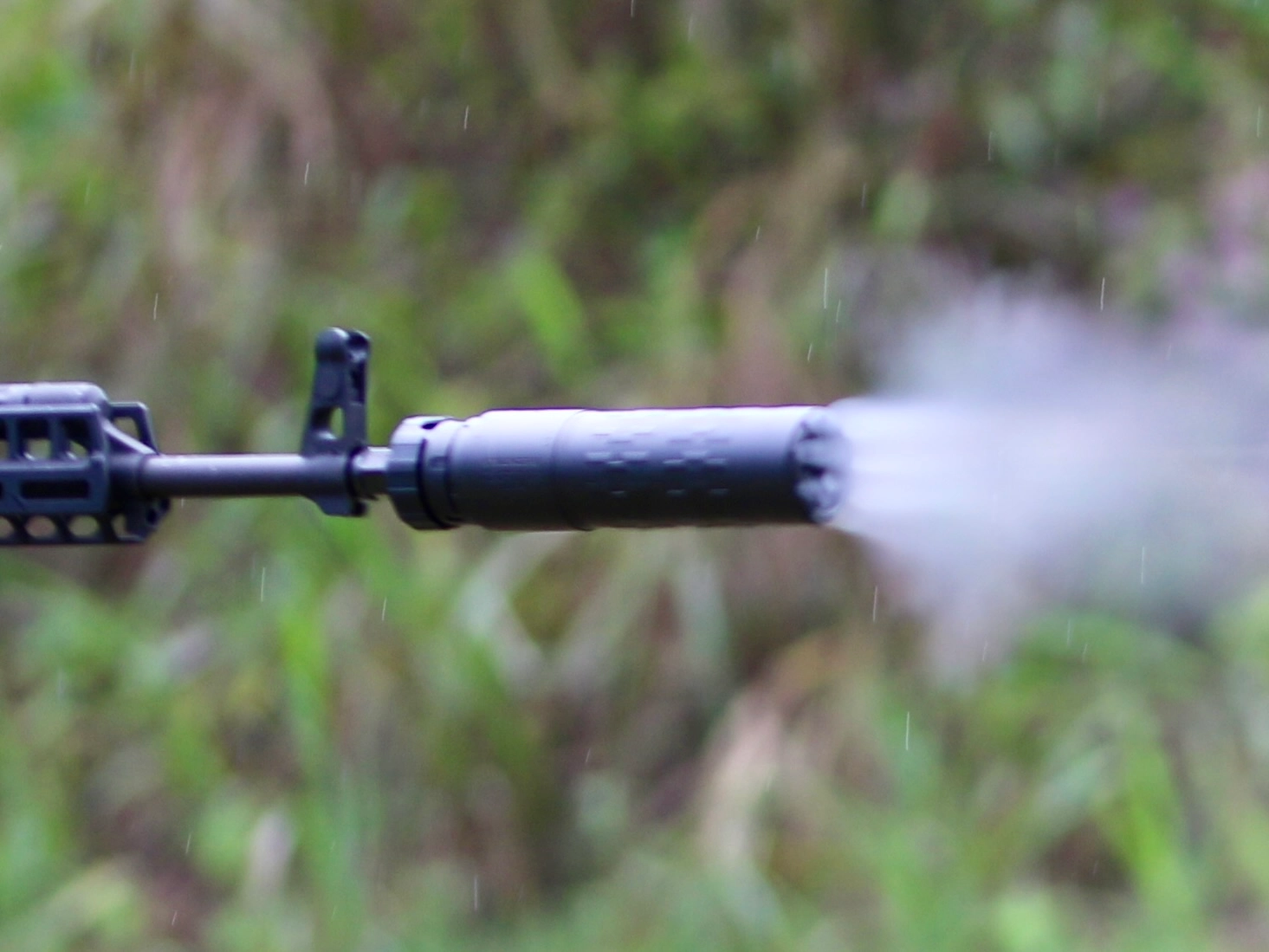
Gas Systems
Let’s get into the nuts and bolts. Well, the bolt is less important in this equation, but any over-gassed rifle system is going to wreak havoc on a bolt. Balance is everything in any automatic action.
As the AK fires, the expanding gas inside the barrel bleeds back into the gas system, where it hits a piston. This piston travels back, driving the bolt carrier out of battery. This system is regulated in a rather primitive way by the compression of the return spring.
The direct impingement AR, by comparison, has no piston. Gas vents into a tube, and then that hits the bolt carrier. It works like the longer AK piston, except the chamber fills with gas. In a suppressed AR — especially one that isn’t suppressed appropriately — you’ll get a face full of gas. One way to stop this is with a SilencerCo Low Back Pressure suppressor.
In the AK platform, there’s a second option—the adjustable gas piston. As the gasses hit the suppressor, more will be directed into the gas system. With a normal piston, this will slam the bolt back hard and increase wear on both the internals and the shooter. But an adjustable piston siphons off gas at the initial contact, leveling off the pressure and returning the system to balance.
Adding one isn’t complex, but it will require some DIY skill. If it is beyond you, hit up a gunsmith.
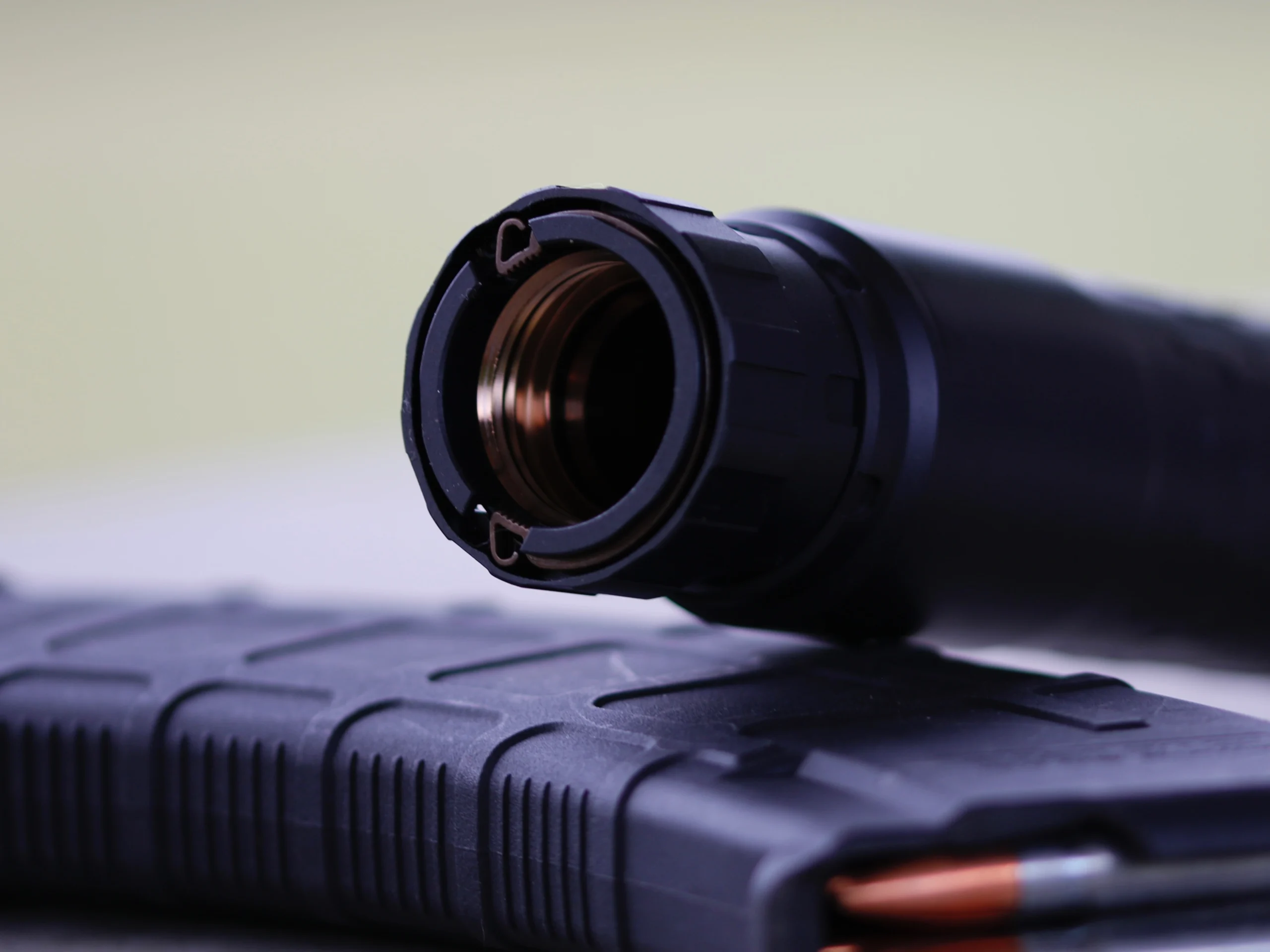
Thread Pitch
After retooling your gas system, you’ll need a way to mount the suppressor to the barrel. Americans gravitate to thread pitches like 1/2×28 and 5/8×24. If your AK was built in the states, odds are you’re good-to-go. If not, you may have a pitch like 14x1LH, especially on 7.62×39 rifles. Newer platforms, like the 5.45 x 49, use 24×1.5 The former Combloc countries sometimes use 22mm pitches or 26mm.
Too many numbers? Don’t sweat. The most fool-proof way to do this is to have your barrel rethreaded to the pitch that matches your suppressor. That way the shoulder will be done correctly, and everything will align as it should.
If that’s not an option, finding the right adapter is easy enough. I’d suggest finding one that indexes on the muzzle, not the sight block. Adding an adapter introduces one more place where things might not line up — but many do it this way with no problems.
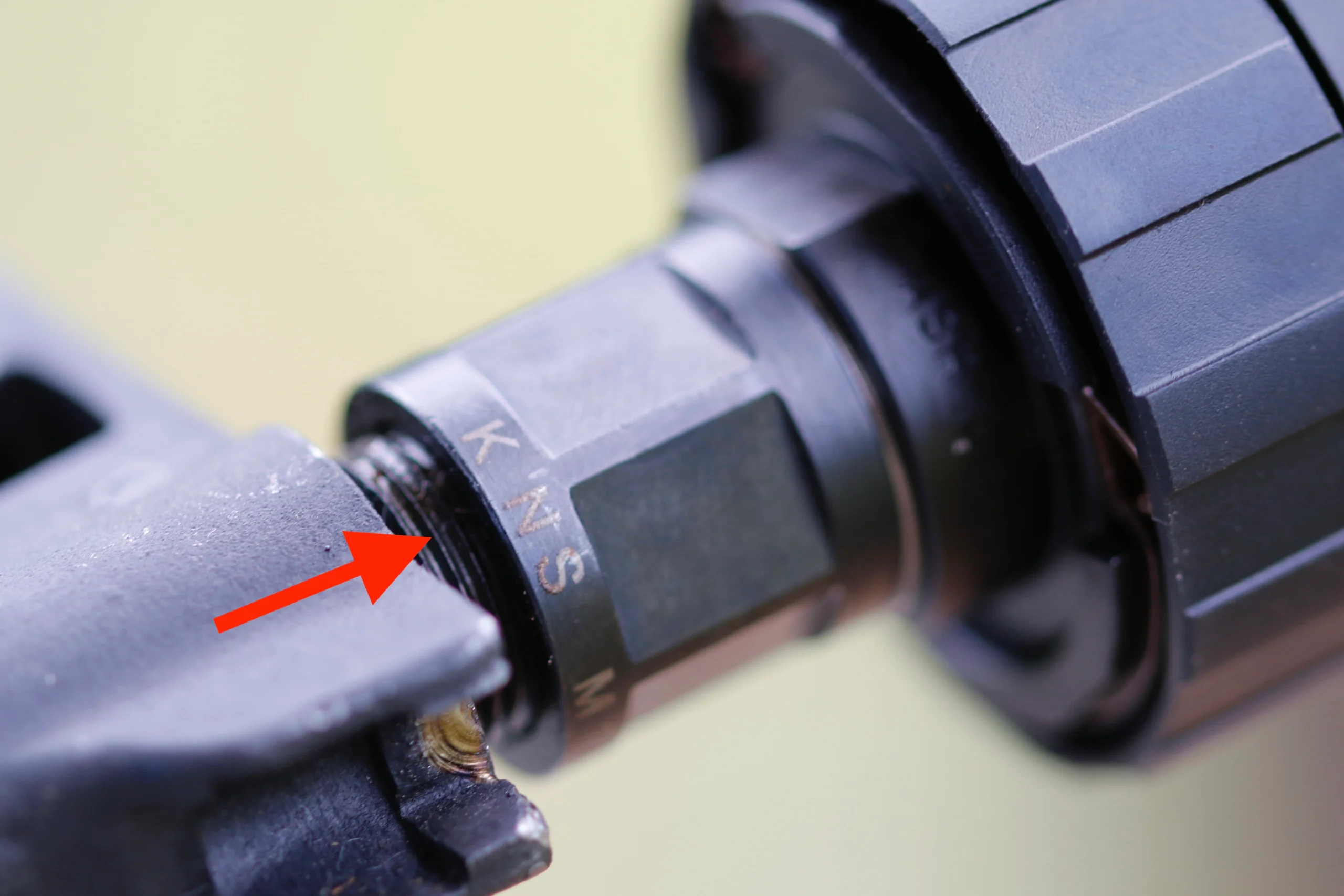
Barrel Concentricity
“What kind of problems,” I hear you ask…
Shoot an over-gassed AK, and you’ll feel the slap. Shoot a suppressed AK that is out of alignment and you may have a baffle strike.
Why does this problem exist? Concentricity.
Let’s assume most barrels are true. While this is a given in most guns, it isn’t at the bottom-end of the AK spectrum. But even some of the well-made AKs have sloppy tolerances, and barrel threading should be viewed as suspect.
All of this sounds ominous. It isn’t. Checking is easy enough. I use a long arrow shaft — one made of carbon fiber. I drop it down the suppressor and barrel until it hits the bolt face. If the shaft of the arrow contacts any part of the suppressor, that’s a no-go.
Another technique, and one that works even more reliably, is to find a wooden dowel that fits snugly in the barrel. Wooden dowels are rarely straight for their entire length, so I cut it to just fit the suppressor and barrel. The barrel side will keep it straight internally, leaving less room for warp in the remaining foot or so that protrudes into the suppressor.
Shine a light in, look for indications that it contacts the baffles or that the bore isn’t concentric. If it seems suspect, at all, get a second opinion from a gunsmith.
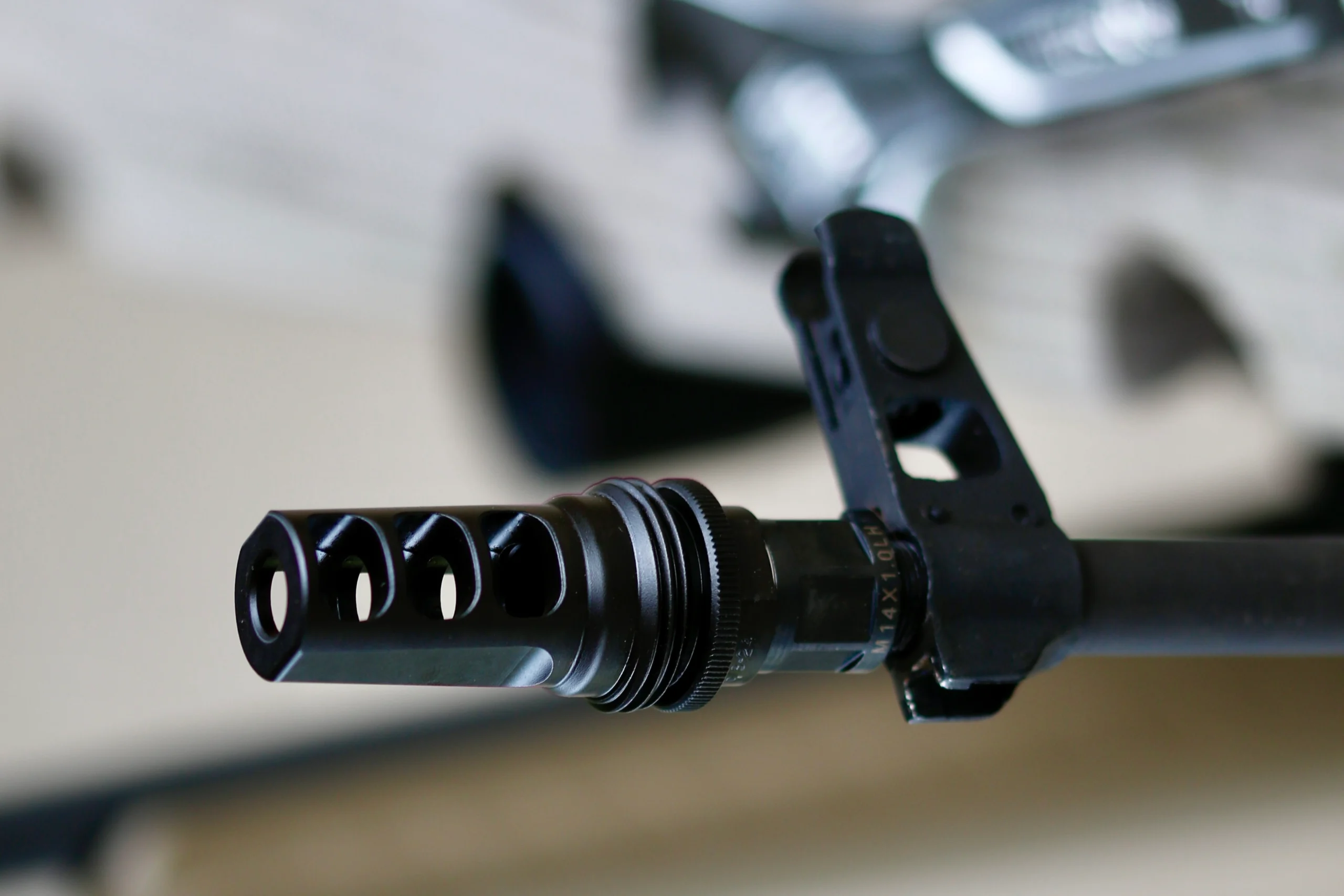
Which Suppressor?
Ok — it all checks out. You’ve got an adjustable piston. You’ve rethreaded the barrel. Everything seems straight enough. Now you have to find the right suppressor for the job.
When I run rimfires and some bolt-actions, I look for maximum sound suppression. When I am going to carry a rifle for miles, I worry about weight. With an AK, I tend to privilege function first.
The Velos LBP 762
SilencerCo’s Low Back Pressure suppressors vent gas toward the front of the suppressor. These extra ports help mitigate the reverse pressure back into the gas system. In a way, this helps keep even unmodified gas systems running in balance.
The Velos LBP 762 weighs in at one pound and adds just six inches to the overall length. They mount with the full variety of Charlie Mounts. I’d used several suppressors on my AK before this one, but my Velos LBP now lives on this gun.
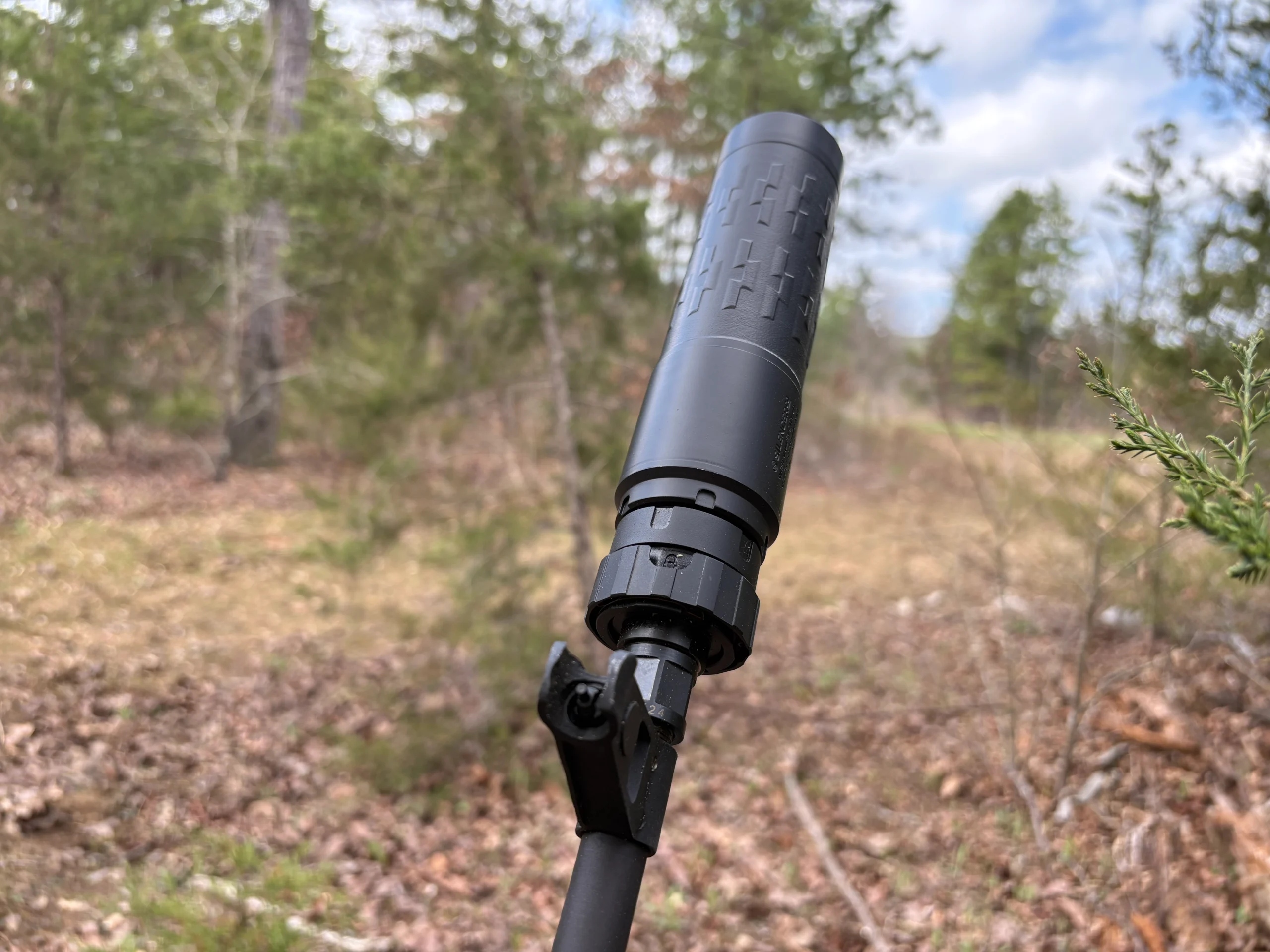
The Omega 36M
If you want a .30 caliber can that offers more versatility, I’d suggest the Omega 36M. This suppressor can be configured in a long form for greater sound suppression, or a short form for both suppression and compact design.
If I were looking for a solid option for using one suppressor on a variety of guns — from an AK to a bolt-action — this would be a contender. The front caps can be swapped out, too, for smaller calibers, making it a good choice for .223, too.
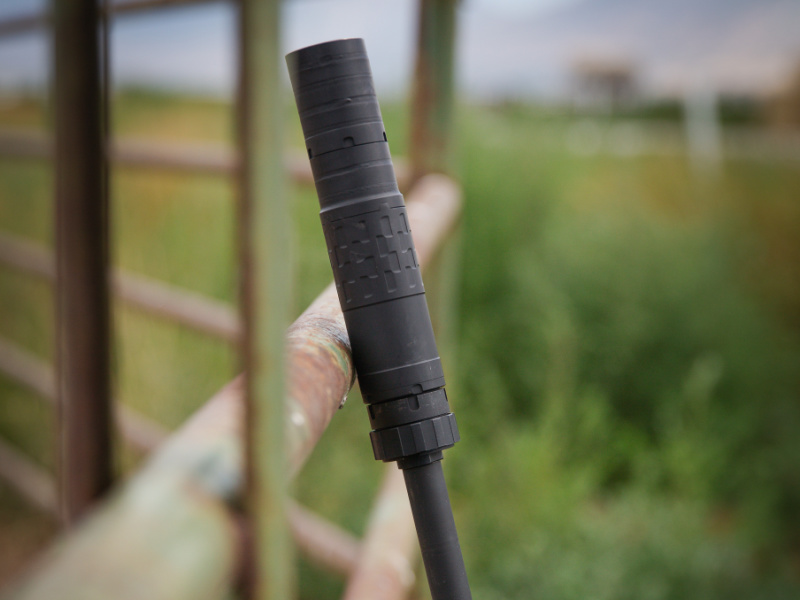
The Scythe® STM
There’s a new addition to the Scythe® line: the Scythe® STM. It borrows the design aesthetic of the Scythe® Ti, which is the lightest suppressor I’ve ever owned thanks to its all-titanium construction, but uses stainless steel instead.
While this adds a slight bit to the weight, it bumps the Scythe® line up in durability. The Scythe STM is full-auto rated and ideally suited for the stresses most AKs see in the field.
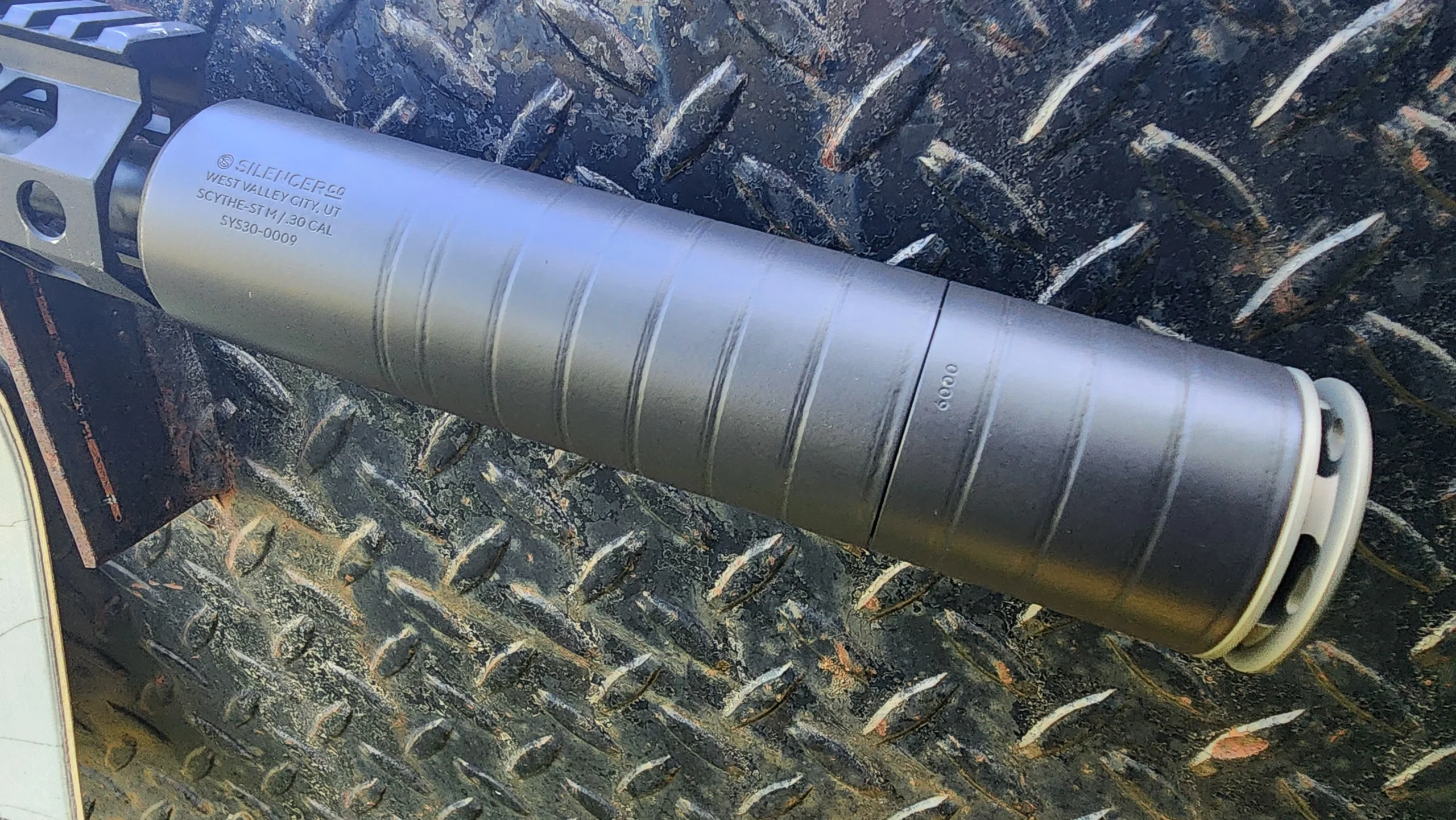
Is It Worth It To Suppress an AK?
I think so. You may infer from my contributions to SilencerCo’s blog that I like suppressors. True enough. But still.
Suppressing an AK-47 just takes a bit more effort. The result, though, will be a connection to your rifle that you may not have now. You’ll know it better. You’ll understand how it works at a much more detailed level, and this tends to result in the kind of affinity that gets you shooting more, and better.
And your ears will thank you.


